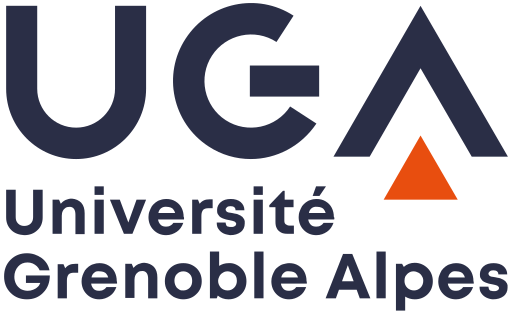When analysing general systems of PDEs, it is important first to find the involutive form of the initial system. This is because the properties of the system cannot in general be determined if the system is not involutive. We show that the notion of involutivity is also interesting from the numerical point of view. The use of the involutive form of the system allows one to consider quite general situations in a unified way. We illustrate our approach on the numerical solution of several flow equations with the aim of showing the impact of the involutive form of the systems in simplifying numerical schemes.
Mots clés : overdetermined PDEs, involution, discretization
@article{M2AN_2005__39_5_909_0,
author = {Mohammadi, Bijan and Tuomela, Jukka},
title = {Simplifying numerical solution of constrained {PDE} systems through involutive completion},
journal = {ESAIM: Mod\'elisation math\'ematique et analyse num\'erique},
pages = {909--929},
publisher = {EDP-Sciences},
volume = {39},
number = {5},
year = {2005},
doi = {10.1051/m2an:2005040},
mrnumber = {2178567},
zbl = {1078.35010},
language = {en},
url = {http://www.numdam.org/articles/10.1051/m2an:2005040/}
}
TY - JOUR AU - Mohammadi, Bijan AU - Tuomela, Jukka TI - Simplifying numerical solution of constrained PDE systems through involutive completion JO - ESAIM: Modélisation mathématique et analyse numérique PY - 2005 SP - 909 EP - 929 VL - 39 IS - 5 PB - EDP-Sciences UR - http://www.numdam.org/articles/10.1051/m2an:2005040/ DO - 10.1051/m2an:2005040 LA - en ID - M2AN_2005__39_5_909_0 ER -
%0 Journal Article %A Mohammadi, Bijan %A Tuomela, Jukka %T Simplifying numerical solution of constrained PDE systems through involutive completion %J ESAIM: Modélisation mathématique et analyse numérique %D 2005 %P 909-929 %V 39 %N 5 %I EDP-Sciences %U http://www.numdam.org/articles/10.1051/m2an:2005040/ %R 10.1051/m2an:2005040 %G en %F M2AN_2005__39_5_909_0
Mohammadi, Bijan; Tuomela, Jukka. Simplifying numerical solution of constrained PDE systems through involutive completion. ESAIM: Modélisation mathématique et analyse numérique, Tome 39 (2005) no. 5, pp. 909-929. doi : 10.1051/m2an:2005040. http://www.numdam.org/articles/10.1051/m2an:2005040/
[1] , Elliptic boundary problems, Partial differential equations IX. M.S. Agranovich, Yu.V. Egorov and M.A. Shubin, Eds., Springer. Encyclopaedia Math. Sci. 79 (1997) 1-144. | Zbl
[2] , Numerical methods for least squares problems, SIAM (1996). | MR | Zbl
[3] , and, Delaunay mesh generation governed by metric specifications. Parts i & ii. Finite Elem. Anal. Des., Special Issue on Mesh Adaptation (1996) 345-420.
[4] , and, Anisotropic grid adaptation for inviscid and viscous flows simulations. Int. J. Numer. Meth. Fl. 25 (1995) 475-491. | Zbl
[5] and, Interior estimates for elliptic systems of partial differential equations. Comm. Pure Appl. Math. 8 (1955) 503-538. | Zbl
[6] and, Linear overdetermined systems of partial differential equations. Initial and initial-boundary value problems, Partial Differential Equations VIII, M.A. Shubin, Ed., Springer-Verlag, Berlin/Heidelberg. Encyclopaedia Math. Sci. 65 (1996) 1-86. | Zbl
[7] Femlab 3.0, http://www.comsol.com/products/femlab/
[8] FreeFem, http://www.freefem.org/
[9] , Automatic mesh generation. Applications to finite element method, Wiley (1991). | MR | Zbl
[10] , Finite element methods for incompressible viscous flow. Handb. Numer. Anal. Vol. IX, North-Holland, Amsterdam (2003) 3-1176. | Zbl
[11] and, Mesh adaptation by metric control for multi-scale phenomena and turbulence. American Institute of Aeronautics and Astronautics 97-0859 (1997).
[12] , and, The origin of spurious solutions in computational electromagnetics. J. Comput. Phys. 7 (1996) 104-123. | Zbl
[13] , and, Overdetermined elliptic PDEs. J. Found. Comp. Math., submitted.
[14] , A simple criterion for involutivity. J. London Math. Soc. (2) 54 (1996) 323-345. | Zbl
[15] and, Involutivity and numerical solution of PDE systems, in Proc. of ECCOMAS 2004, Vol. 1, Jyväskylä, Finland. P. Neittaanmäki, T. Rossi, K. Majava and O. Pironneau, Eds., University of Jyväskylä (2004) 1-10.
[16] , Conservative high-order finite-difference schemes for low-Mach number flows. J. Comput. Phys. 158 (2000) 71-97. | Zbl
[17] , Finite element methods for fluids, Wiley (1989). | MR | Zbl
[18] , Systems of partial differential equations and Lie pseudogroups. Math. Appl., Gordon and Breach Science Publishers 14 (1978). | MR | Zbl
[19] , Physicochemical hydrodynamics, Wiley (1995).
[20] and, Numerical approximation of partial differential equations. Springer Ser. Comput. Math. 23 (1994). | MR | Zbl
[21] , Involution - the formal theory of differential equations and its applications in computer algebra and numerical analysis, Habilitation thesis, Dept. of Mathematics, Universität Mannheim (2001) (manuscript accepted for publication by Springer-Verlag).
[22] , Overdetermined systems of linear partial differential equations. Bull. Am. Math. Soc. 75 (1969) 179-239. | Zbl
[23] and, On the numerical solution of involutive ordinary differential systems. IMA J. Numer. Anal. 20 (2000) 561-599. | Zbl
[24] and, On the numerical solution of involutive ordinary differential systems: Higher order methods. BIT 41 (2001) 599-628. | Zbl
[25] , and, On the numerical solution of involutive ordinary differential systems: Enhanced linear algebra. IMA J. Numer. Anal., submitted. | Zbl
Cité par Sources :








